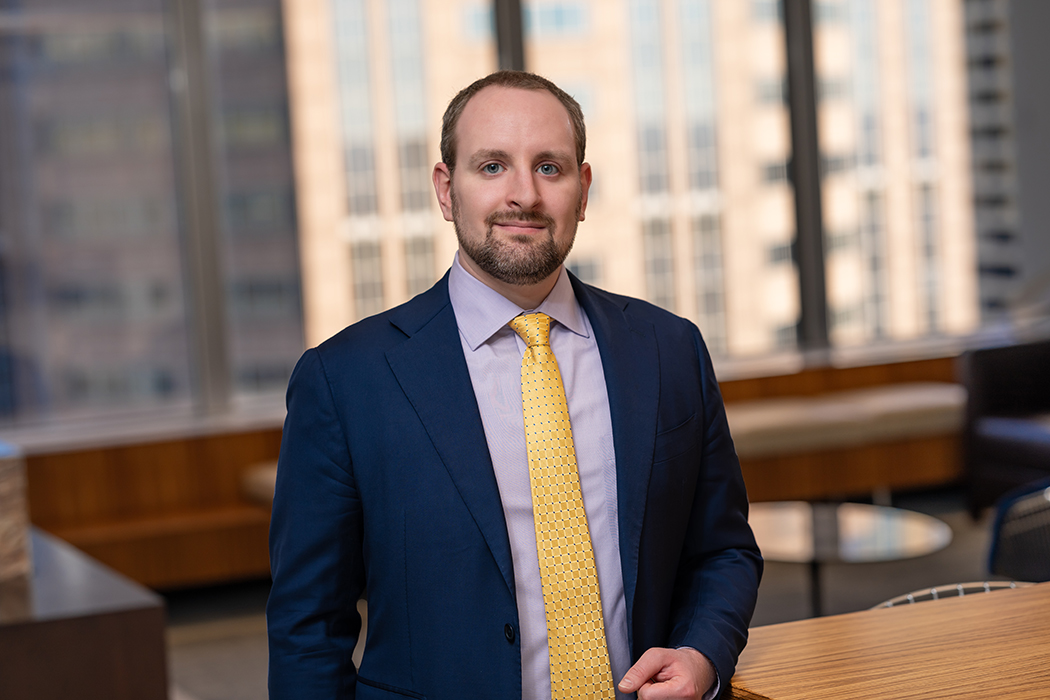From Technology Transfer to Takings Clause: The Legal Stakes of March-In Rights
- September 10, 2025
- Snippets
On August 8, 2025, U.S. Department of Commerce Secretary Howard Lutnick took an unprecedented step that could reshape the landscape of federally funded research and intellectual property law. He sent a letter informing Harvard University that the Department of Commerce is exercising certain federal rights under the Bayh-Dole Act.[1] Specifically, the Department is beginning the process of “grant[ing] third-party licenses to Harvard’s patents” under 35 U.S.C. § 203 and will “take title where Harvard has filed [sic] timely to disclose or elect title to inventions” under 35 U.S.C. § 202.[2] Secretary Lutnick’s stated reasons for doing so are Harvard’s alleged failures to comply with (1) 35 U.S.C. § 202(c)(1) and 37 C.F.R. § 401.14(d)(1)(i) (relating to disclosure of subject inventions and election of title); (2) 35 U.S.C. § 204 and 37 C.F.R. § 401.14(i) (pertaining to U.S. manufacturing requirements); and (3) 35 U.S.C. § 203(a)(1) and 37 C.F.R. § 401.14(j)(1) (governing march-in rights for failure to achieve practical application).[3] This marks the first time since the Act’s passage in 1980 that a federal agency has meaningfully invoked its rights under §§ 202, 203.
What are Sections 202 and 203?
To put Secretary Lutnick’s letter in context, the Bayh-Dole Act, signed into law in 1980 by President Jimmy Carter, provides a framework for determining control of inventions arising from federally funded research. By allowing universities, nonprofits, and small businesses to retain ownership of these inventions, the Act encourages institutions to turn taxpayer-funded research into real-world products, benefiting both the public, private industry, and the government.
However, these benefits come with two important caveats. First, Section 202 of the Act governs the allocation of rights between contractors, federal agencies, and inventors. Contractors may elect to retain title to a subject invention if they comply with certain disclosure requirements, including timely reporting to the funding agency and providing written election within two years — otherwise, the federal government “may” receive title to a subject invention.
Second, under the Act’s “march-in rights” under Section 203, federal agencies may require a contractor patent holder to grant licenses to the government or third parties if the invention is not being sufficiently commercialized, if health and safety needs are unmet, if public use requirements are not being satisfied, or if the invention is not substantially manufactured in the U.S. without a waiver.
If the Department of Commerce follows through on its plans, what happens next?
Harvard may initiate a legal challenge under the Fifth Amendment’s Takings Clause, which prohibits the taking of private property for public use without providing “just compensation.”
While patents are considered private property,[4] the Supreme Court has characterized them as “only a specific form of property right — a public franchise,” the rights of which are dictated by statue.[5] The Supreme Court, has never provided a clear indication of whether patent rights are property rights protected under the Takings Clause.[6] However, it is conceivable that, when the federal government interferes with patent rights — especially in a way that limits or eliminates a patent holder’s exclusivity — it can amount to such a “taking” under the Constitution.
If patent rights are protected under the Takings Clause and if the federal government takes full title of Harvard’s patents under 35 U.S.C. § 202, Harvard could argue that it is completely deprived of the economic use of these patents. That kind of complete deprivation may be viewed as a per se taking, as in Lingle v. Chevron U.S.A.[7] In such a scenario, Harvard could be entitled to full fair market value of the affected patents. Though there is no official valuation of Harvard’s patent portfolio, some estimates place the portfolio’s value in the range of hundreds of millions of dollars.[8]
If the government only compels Harvard to grant non-exclusive licenses under 35 U.S.C. § 203, the analysis shifts to a more complex regulatory takings analysis because Harvard, arguably, would still retain some economic interest in the patents. The relevant test is the three-factor test from Penn Central Transportation Co. v. New York City.[9]
The first Penn Central factor assesses the extent to which the governmental action impacts the economic value of the property at issue, in this case, Harvard’s patent portfolio. As of July 1, 2024, Harvard “had more than 900 technology licenses with over 650 industry partners.”[10] Harvard could argue these licenses are based on the exclusivity of Harvard’s patents, meaning that forced issuance of licenses to competitors could undermine negotiated arrangements, devalue existing licenses, and jeopardize future licensing prospects. Such actions, Harvard could argue, constitute a “substantial” burden on its property described in Florida Rock Industries, Inc. v. United States.[11] The government, in turn, could argue that the imposition of non-exclusive licensing obligations constitutes, at most, a minimal interference — Harvard retains the right to license its patents broadly and continue generating revenue. Such minimal interference, the government could argue, does not qualify as a taking.[12]
The second Penn Central factor assesses whether governmental actions interfere with the claimant’s reasonable, investment-backed expectations. Harvard could argue that the government has never exercised § 202 nor § 203 in the decades since Bayh-Dole’s enactment. This dormancy has created a widespread, reasonable expectation within the research community that these rights were essentially a theoretical last resort. Harvard could argue that its entire IP commercialization strategy was built on this reasonable reliance. The government could counter by appealing to cases like Ruckelshaus v. Monsanto Co.[13] for the principle that Harvard, having full statutory notice of the government’s retained authority, had no reasonable expectation that such rights would never be invoked.
The final Penn Central factor assesses the character of the governmental action, with courts typically affording greater deference to general regulatory schemes serving a broad public purpose, as opposed to targeted, government actions that single out specific entities. Harvard could argue that the government’s selective enforcement, aimed solely at a single institution after decades of non-use, appears punitive and strategic rather than as a consistent application of public policy. This raises concerns about the government “forcing some people alone to bear public burdens which, in all fairness and justice, should be borne by the public as a whole,” as articulated in Armstrong v. United States.[14] The government could contend that its action falls within the scope of a broader regulatory framework designed to protect public health and ensure access to innovations arising from federally funded research, consistent with the intent of the Bayh-Dole Act.
Taken together, all three Penn Central factors would seem to weigh in favor of Harvard, pointing to a substantial interference with economic value, a disruption of reasonable investment-backed expectations, and a government action that appears targeted rather than part of a neutral, general regulatory scheme.
The government’s strongest argument may be that actions taken under 35 U.S.C. §§ 202, 203 do not trigger the Takings Clause at all, and that this situation should be viewed through the lens of contract law. Under this interpretation, the Bayh-Dole Act operates like a contract. In exchange for accepting federal research funding, universities and other organizations agree to certain conditions — including the government’s rights under §§ 202 and 203. Nothing requires a university or other organization to accept federal money; they could pursue alternative sources of research funding. Similarly, there is no requirement to seek patents on inventions arising from federally funded work. The government could argue that institutions like Harvard entered this arrangement voluntarily and with full awareness of the potential consequences of noncompliance. Because the terms were clear in 35 U.S.C. and 37 C.F.R. from the outset, there is no legitimate claim of disrupted investment-backed expectations as the Supreme Court held in Connolly v. Pension Benefit Guaranty Corp.[15]
What could this mean?
The Trump Administration’s decision to invoke the Bayh-Dole Act against Harvard could be a precedent-setting moment with multiple implications for the future of federally funded research, innovation policy, and patent law. If successful, the use of march-in rights against Harvard could help normalize the further utilization of the Act’s provisions moving forward. This could be a boon for a variety of parties, including those seeking to reduce high drug prices.[16] For those who view march-in rights as a necessary check on private profiteering from public research, this could be a welcome, even transformative, development.
Universities and research institutions — long reliant on federal research dollars—may begin to see that funding as a source of regulatory risk, not just financial support. If Bayh-Dole rights can be enforced unpredictably or selectively, institutions could start rethinking their participation in federally funded research altogether. While large-scale alternatives to government funding are limited, the possibility of shifting toward philanthropic, corporate, or international sources — particularly in commercially valuable research areas — may become increasingly attractive.
In the end, the administration’s actions may succeed in expanding public leverage over taxpayer-funded inventions. But that success could come at the cost of destabilizing the expectations that have underpinned decades of public-private collaboration.
[1] https://x.com/howardlutnick/status/1953967726135063023.
[2] Id.
[3] Id.
[4] See, e.g., James v. Campbell, 104 U.S. 356, 358 (1881).
[5] Oil States Energy Servs., LLC v. Greene’s Energy Grp., LLC, 138 S.Ct. 1365, 1375 (2018).
[6] Id. at 1379 (“our decision should not be misconstrued as suggesting that patents are not property for purposes of the Due Process Clause or the Takings Clause.”).
[7] 544 US 528, 539-40 (2005).
[8] https://news.bloomberglaw.com/ip-law/trump-administration-threatens-to-seize-valuable-harvard-patents
[9] 438 U.S. 104 (1978).
[10] https://www.usnews.com/news/top-news/articles/2025-08-08/exclusive-harvard-patents-targeted-by-trump-administration.
[11] 18 F.3d 1560 (Fed. Cir. 1994).
[12] See Penn Central, 438 US at 136-38 (reasonable, minimal burdens on property are not takings).
[13] 467 US 986 (1984).
[14] 364 U.S. 40, 49 (1960).
[15] 475 U.S. 211, 227 (1986).
[16] https://www.ftc.gov/news-events/news/press-releases/2024/02/ftc-submits-comment-march-rights-promote-efforts-lower-drug-prices.

